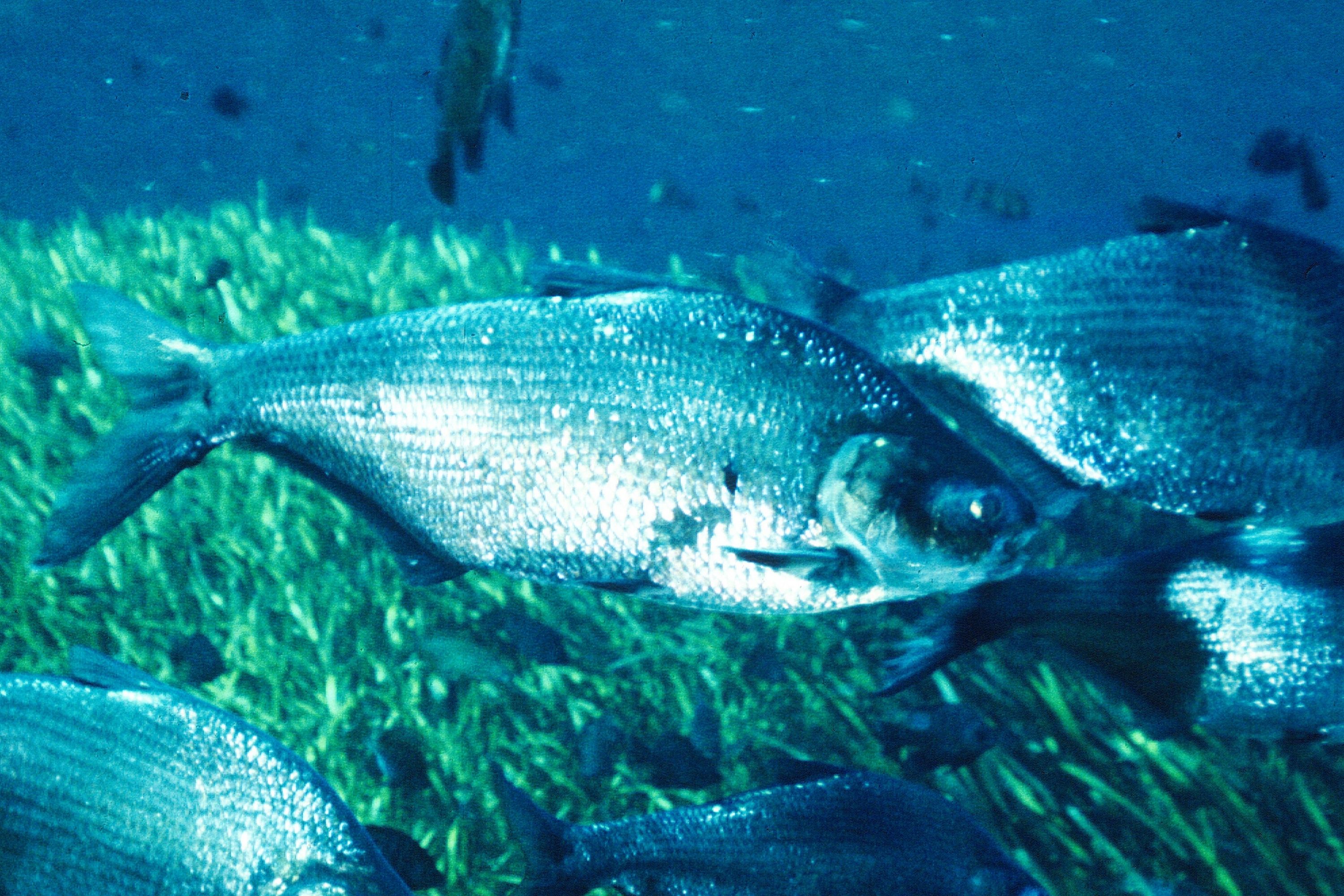American gizzard shad
(Dorosoma cepedianum)

Description
The American gizzard shad (Dorosoma cepedianum), also known as the mud shad, is a member of the herring family of fish, and is native to large swaths of fresh and brackish waters of the United States of America. The adult has a deep body, with a silvery-green coloration above fading to plain silver below. The gizzard shad commonly resides in freshwater lakes, reservoirs, rivers, and streams, but can reside in brackish waters, as it does on the Atlantic coast of the United States. Their range is across most of the continental United States, although they typically go no further north than New York and no further west than New Mexico. They are large parts of many of the ecosystems they inhabit, and can drive changes in phyto- and zooplankton, thereby indirectly affecting other planktivorous fishes. The gizzard shad has been widely used as a food source for game fish, with varied success in management and effectiveness. The gizzard shad's dorsal fin starts behind the insertion of the pelvic fins, and the last ray is greatly lengthened in adults, but not in the young. They have a long anal fin, with 25 to 36 long, soft rays on the fin. The mouth of the gizzard shad has a short, wide, upper jaw with a deep notch along the ventral margin, and a weak, relatively smaller, lower jaw. The mouth itself is subterminal to inferior (on the lower portion of the head), and the adults possess no teeth. The gizzard shad also has 90 to 275 gill rakers along the lower limbs. Their ventral (pelvic) fins are in the thoracic position, or in the chest region of the fish. The gizzard shad can range from very small size when fry to a maximum recorded length of 477 mm (18.8 in) and maximum weight of 1.56 kg (3.4 lb). The average length is typically larger in northern waters, and ranges from 284 mm (11.2 in) at age three years to 399 mm (15.7 in) at age 10. They have a highly reduced lateral line system, a feature shared by other members of the Clupeidae. To compensate for this reduction in their mechanical sensory system, they have developed other methods of sensing movement. They have historically ranged from North Dakota in the northwest of the United States south to New Mexico in the southwest, east to Florida in the southeast, and north to 40°N latitude (they have historically been seen no farther north than the lower New York Harbor).
Taxonomic tree:







